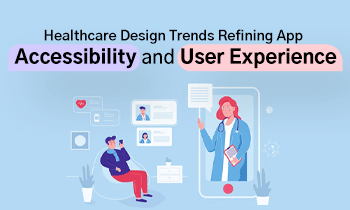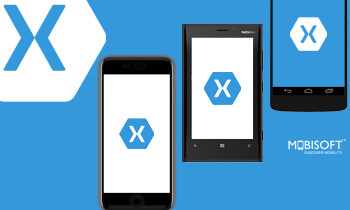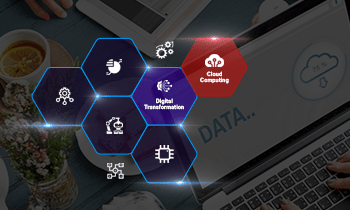The logistics and supply chain management industry has been a silent witness to multiple technological upgrades within a short period. More people are buying products from popular online retail sites. With an ever-increasing workload, the industry is quickly adapting to technical innovations that raise the overall efficiency.
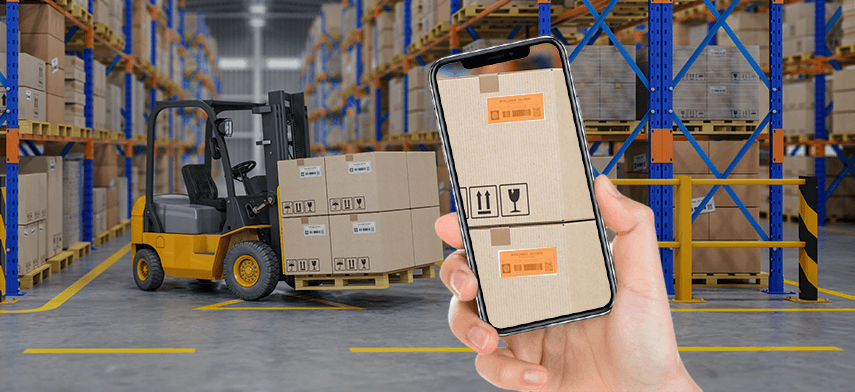
The onset of Covid-19 has resulted in opting for safe contactless shipping products on a worldwide scale. Mobile scanning software has become a pivotal part of this seamless transition.
Trends Increasing Usage of Seamless and Contactless Delivery Post-Covid-19
Smartphones have been a boon to several industry sectors. Not only for communication, but the added features and programmable apps have also been thoroughly utilized in virtually each business sector- including logistics and supply chain management operations.
In the middle of global lockdown-like situations, staying in isolation and minimal public exposure has become the norm. The entire world has come to a standstill, and a significant section of the population prefers home-delivery of products.
Online page visits have increased as much as 75% (over a year), while the purchase count has increased 1.57 times. The logistics industry is tasked with delivering these products – be it daily essentials, medicines, or any other thing.
It wasn’t easy to maximize revenue while following strict hygiene protocols. Companies were forced to adapt to changing market trends and adapt their e-commerce strategies. Last-mile delivery options (including drones), AI and augmented intelligence, digital twin modeling- all are actively being used in supply chain management operations.
Supply Chain Visibility (SCV) solutions are no longer a thing of the near future- but a must in the logistics world of 2020. Real-time data is accessed both by consumers and organizations. A properly integrated supply chain can enhance the organization’s efficiency by as much as 20%.
While QR codes have already been present for some time, the industry’s response to the technology had been lukewarm at best. The Covid-19 pandemic brought it back to the mainstay, and several leading logistics solution providers are effectively using it. The 2-dimensional QR code can store a lot more information than the conventional 1-D barcodes. It also occupies less space.
There is another popular reason for its meteoric rise – the rise of Contactless Payment. A large section of the consumer population (57%) reported that the merchant selection is based on available payment options. Around 26% of them believe local retailers must also provide the facility of QR-payment.
Application of mobile computer vision scanning solutions for logistics
Mobile computer vision facilitates the identification and processing of images similar to the human eye. The computer science field deals with camera-fitted devices and enables the user to take the next appropriate step, similar to artificial intelligence. Smartphones are easily available nowadays, and with the relevant software- it is now a breeze to obtain and analyze any image data.
They come with GS1-compliant QR code, and the possible industrial applications are endless- especially when it comes to logistics and supply chain management solutions. Let us take a look at a few significant ones:
- Distribution Centres
The QR codes contain information describing the product. With the right software, companies can use smartphone handhelds in warehouse scanning systems easily. Company workers can easily sort and identify products. This leads to a better-organized warehouse, effective handling, shipping, and loading and unloading of packages. It is now possible to perform functions such as accurate ID’ing in a high-speed workflow at a nominal cost- thanks to the presence of smartphone scanning apps. The mobile phones are less expensive than dedicated scanning devices. Also, there are no worries about a possible contact. After the coronavirus- these steps have been seen as an absolute essential.
- Last-Mile Delivery Operations
The main revolution due to smartphones came in the last-mile delivery section. In this process, the operator requires the pinpoint location of the drop site, along with the correct time and date. This ensures that the customers receive the correct package delivery at the right place and time. Delivery personnel and drivers receive the required information about the customer through their smartphones. They also use it as a multi-utility device. Some of the functions include rapid identification of the correct delivery package by hovering the smartphone through the QR overlays on the parcels. The drivers can also access any information updates in real-time.
- Complete Digitization of the Process
In the light of the covid pandemic, mobile scanning solutions and the related apps provide a total contactless delivery of products right from the inventory to the doorstep. The process can be easily digitized making the entire transfer operation better and more efficient. From digital bits, receipts and payments, increasing mobile vision are here to stay.
- Driver Time Management
Android application software can keep track of the drivers. These applications provide detailed listings and documentation of the multiple drivers. Logistics companies also use these along with smartphone scanning apps on the driver’s end to keep track of the time spent at each stoppage for delivering the product to the customer. The app also includes details like customer name, arrival and departure time, and a host of other features.
- Resolving Customer Complaints
With the help of a logistics scanning solution and other specialized software, it is now possible to find the delivery truck’s exact location using GPS. This feature is very useful for addressing customer complaints and queries- providing the respondent with the relevant information about the customer shipment. The chances of an error in shipping the right product is minimized using the mobile scanning vision software. In the unfortunate event of a mistake, the delivery guy can check the parcels quickly. Scanning and text reader software also allows rapid synchronization of the latest address changes, if any.
- Bar Code Scanning
Scanners that operate based on image recognition and analysis are much better than IRs, LEDs, and LASER readers. They are more efficient, and unlike their predecessors, image-capture-based scanners can perform complex operations while capturing a barcode. The software processes the barcode image captured by the digital camera lens. There are two significant advantages- the optical bar-code scanners are more flexible to use than the LASER scanners. The other benefit- the same scanner can be used to decode multiple barcodes at once.
- Inventory Optimization
It is difficult to keep track of each product throughout the warehouse. Products past their expiry date are simply a waste of space and a potential bad delivery. Thus timely removal of such products is crucial. QR codes are capable of storing information that far surpasses the storage capacity of a usual bar code reader. Companies can use warehouse scanning systems to keep track of product particulars along with inventory optimization software and address issues related to defective or expired products swiftly.
- Blockchain technology
In the realm of logistics and supply chain management, blockchain technology creates a transparent medium which facilitates proper documentation of activities at each level. In simple words, it is a shared register that records transactions done between parties. The information is stored in the form of chained-data blocks- which are date-stamped and properly encrypted. Its unique nature makes it unhackable. The Blockchain helps in creating leaner, smarter, and more efficient logistic organizations.
- Contactless Proof of Delivery App
This newly-developed app ensures the prevention of any possible touch-interaction. Recipients do not even need to put their signature on the driver’s device to confirm successful delivery. The QR code on the parcel is simply scanned with the web app on the handheld device. The process completes when the customers sign in on their own devices to confirm receiving deliveries. These apps also integrate easily with the pre-existing workflow, while the customers are not required to download anything. With the help of contactless proof of delivery apps, blockchain implementation is now possible in a world that has been at a standstill.
How are Mobile Vision Scanning Solutions Transforming Prevalent Supply Chain Management Solutions?
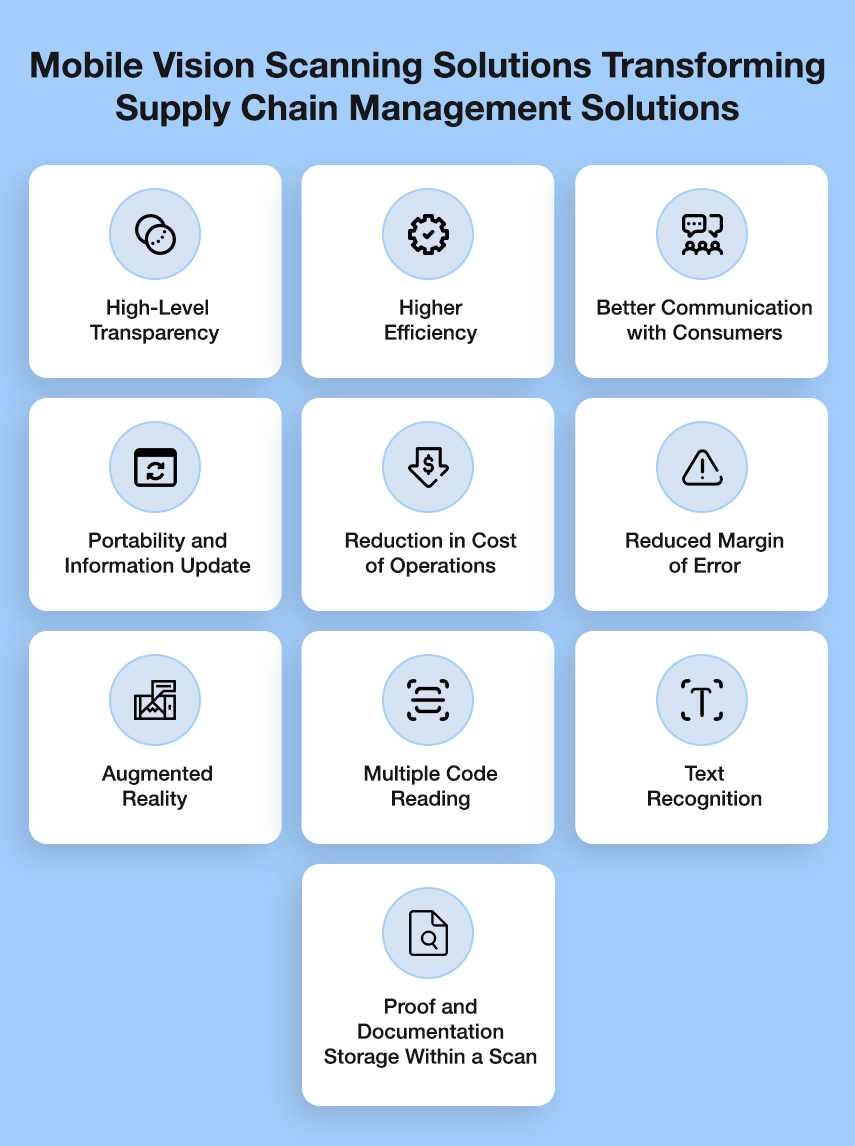
As explained earlier, the implementation of mobile web scanning apps has been a game-changer in logistics. Leading reports on supply chain management operations indicate that online marketing preference will only increase each passing day.
Covid-19 restrictions throughout the UK resulted in a 3.5% lesser footfall at the shopping centers. Now let us take a look at how digital scanning and mobile computer vision influenced the different aspects of logistics for the better.
1 High-Level Transparency
Mobile barcode scanners allow businesses to keep a real-time track of shipments and operational activities. Organizations can grab hold of the inventory as the exact time of arrival and departure. Practical apps that can be easily used by employees/workers all over the hierarchy results to save detailed attributes of the products in the warehouse- including the reporting of damaged or missing articles at the entry point. Transparent operations help in streamlining the entire workflow.
2 Higher Efficiency
The ability to track shipments in real-time at both the entry and the exit points culminates in a better success of the business operations—the entire efficiency of the organization increases. Using the technology, the organization has exact details of the products – which product went to retail stores, shopping centers, or individual domestic purchase (end customer).
3 Better Communication with Consumers
The current lockdown scenario has changed the behavioral patterns of the average consumer. The modern consumer adept with online shopping often tends to question the delivery of the shipment. More so if the delivery happens to be delayed due to unforeseen circumstances. With the help of real-time tracking, consumers can be informed of the precise date and approximate time of delivery.
4 Portability and Information Update
Any information update- whether related to the delivery location(possible changes) or the product particulars can be easily transferred through the entire level of the operation using mobile barcodes or QR codes. This includes the delivery drivers. The ability to update information ensures a smooth, hassle-free performance throughout the organization.
5 Reduction in Cost of Operations
The one-time investment needed for switching over to dedicated scanners is almost three times that of a smartphone or similar handheld device. Avoid the cost by adopting a BYOD (Bring Your Device) strategy. Besides, the familiar interface of smart devices makes it an easier choice for training.
6 Reduced Margin of Error
Using multi-scan can capture a large number of QR codes on shipments in one scan. This results in a lower possibility of human error by drivers/associates. There is no need to scan each parcel in a shipment individually. The entire sorting process becomes much easier.
7 Proof and Documentation Storage Within a Scan
The proof of delivery is one of the most important requirements signaling the completion of a logistics operation. With smartphone scanning apps and mobile scanning software, the delivery drivers no longer need to gather the client’s signatures.
8 Multiple Code Reading
A scanning system works based on image recognition, and analysis can be used to read multiple codes. You can use the same mobile vision for different types of code- barcode, QR code. The longer code capture range of LASER and LED scanners does come with a drawback- localization. You can avoid this by using smartphone scanning apps. Customers can pay through multiple methods, and it eases the process. Thus, providing better customer satisfaction.
9 Text Recognition
Smartphone scanning apps come with the added feature of text recognition. From a direct keyboard scanning option to a barcode scan button added to the keyboard, it’s simple and easy. Plus, mobile vision scanners work well under low-light conditions, which is highly beneficial in a place like warehouses. Without it, packaging and identification of the parcel would have been challenging, delaying the entire process.
10 Augmented Reality
The scanning solutions for logistics in smart-devices can be tweaked to provide an AR (Augmented Reality) output. The augmented reality features combine features of AI with human intelligence. AR output can be used in various ways- locating shipments within the warehouse, finding and identifying wrong loads, and much more. Thus,
The Usage of Technology: Future of Logistics Industry
With rising competition in the logistics sector, efficient usage of technology along with an organized workforce is what keeps the industry leaders ahead in the competition. Recent trends, as published in reputed business articles, indicate the emergence of both risk and opportunities in this segment.
New technologies are making waves with AI, augmented intelligence, RFID tags, automation, or analytics. The patterns are changing. With new entrants/start-ups creating impact by adapting to the latest technological advancement is essential for thriving.

The main challenge lies not in the implementation of the emerging technologies but in training the workforce. Approximately 50% of the people involved in the logistics and transport sector are still new to the digital culture. Thus, smartphones or other devices is the easiest way to get them acquainted with newer innovations while increasing productivity and efficiency.
Mobisoft provides effective scanning solutions for logistics that are easy-to-use and implement. The available Mobisoft services include:
- Barcode Scanning
- QR code Scanning
- Text Recognition Scanning(OCR)
- Keyboard Wedge
- ID Scanning Software for Smart Devices
- Barcode Scanner SDK for OEM
The solutions provided are all-inclusive of the following features:
- Multi-code Scanning
- Any Device Compatibility(BYOD)
- High-Speed Response
- GS1 compliant
- Tough Code Handling
- Multi-code recognition
- Wide-angle alignment
- Low light management
- Long-distance resolution.
Wrapping It Up,
The onset of the global pandemic has aggravated the speed at which technological innovations were supposed to be implemented in logistics and supply chain management operations. However, it was also inevitable as indicated in several reports and published articles.
The global market value scaled past US$ 4963 billion in 2019 and is expected to reach US $6,537 billion by 2025. Innovations like AI and augmented intelligence or block-chain technology are associated with changing the workflow process.
However, it is the digital logistics scanning solution that ensures the proper implementation of these changes at each level of the organization- from the warehouse to the last-mile/point delivery.

Author's Bio

Nitin Lahoti is the Co-Founder and Director at Mobisoft Infotech. He has 15 years of experience in Design, Business Development and Startups. His expertise is in Product Ideation, UX/UI design, Startup consulting and mentoring. He prefers business readings and loves traveling.
